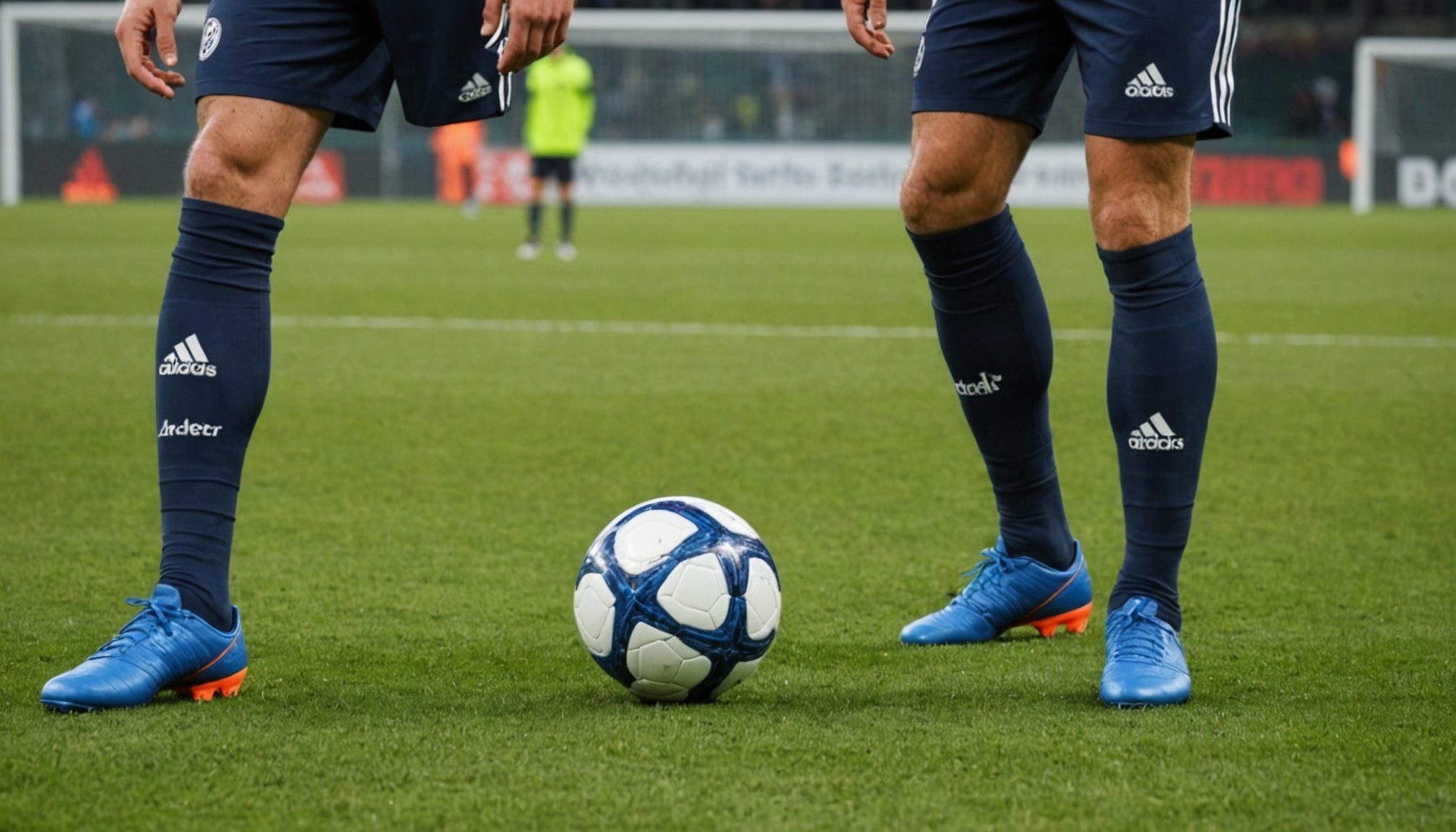Mastering Free Kicks in Football: Top Strategies to Boost Your Precision
Understanding the Importance of Free Kicks
In the world of football, free kicks are a crucial aspect of the game that can significantly influence the outcome of a match. A well-executed free kick can be the difference between victory and defeat, making it an essential skill for any player to master. Whether you are a seasoned professional or an aspiring young player, improving your free kick technique can elevate your game and make you a more valuable asset to your team.
Developing a Pre-Kick Routine
One of the key strategies to improve your free kick precision is to develop a consistent pre-kick routine. This approach is often seen in other sports as well, such as golf and tennis, where players use routines to focus and prepare for their shots[1].
In the same genre : Mastering the Shift: Essential Steps for a Successful Transition from Football Player to Referee
Why Routines Matter
- Focus and Concentration: A routine helps you stay focused and calm under pressure. By following the same steps each time, you can block out distractions and maintain your concentration.
- Muscle Memory: Consistency in your routine helps build muscle memory, allowing your body to perform the action more naturally and accurately.
- Confidence Boost: A well-practiced routine can boost your confidence, as you know exactly what to expect and how to execute the kick.
Example Routine
- Step Back and Align: Take a few steps back from the ball and align your body with the goal.
- Visualize the Shot: Close your eyes and visualize the ball going into the net.
- Take Deep Breaths: Breathe deeply to calm your nerves.
- Approach the Ball: Approach the ball with a consistent stride, keeping your eyes on the target.
- Strike the Ball: Strike the ball with the laces or the inside of your foot, depending on your preferred technique.
Practicing with a Wall
Practicing your free kicks against a wall is an effective way to improve your accuracy and power. This method allows you to focus on your technique without the pressure of a game situation.
Benefits of Wall Practice
- Repetition: You can take multiple kicks in quick succession, allowing for rapid improvement.
- Immediate Feedback: You get immediate feedback on your technique, as you can see where the ball hits the wall.
- Controlled Environment: It provides a controlled environment where you can focus solely on your kicking technique.
Tips for Wall Practice
- Start with Short Distance: Begin with shorter distances to focus on accuracy before increasing the length.
- Vary Your Kicks: Practice different types of kicks, such as driven shots and curled shots.
- Analyze Your Technique: Watch videos of your kicks or ask a coach to analyze your technique.
Training with a Team
While individual practice is crucial, training with your team can provide additional benefits that simulate game conditions.
Topic to read : How Brexit Affects Non-UK Football Players in English Leagues: Insights and Implications
Game-Like Situations
- Set Pieces: Practice set pieces during team training sessions. This helps you get used to the pressure and the presence of defenders.
- Defender Interaction: Practice kicking with defenders trying to block your shot. This prepares you for the real game scenario.
- Communication: Communicate with your teammates to understand their roles and how they can help distract defenders or create space.
Example Training Drill
- Free Kick Scrimmage: Set up a scrimmage where one team is defending a free kick. The kicking team must work together to create an opportunity for the kick.
- Defender Rotation: Rotate defenders to simulate different defensive strategies and force the kicker to adapt.
Analyzing Successful Free Kick Takers
Looking at successful free kick takers can provide valuable insights into what makes their technique effective.
Case Study: David Beckham
David Beckham is renowned for his exceptional free kick ability. Here are some key aspects of his technique:
- Run-Up: Beckham used a short, consistent run-up that allowed him to generate power without losing control.
- Plant Foot: He placed his plant foot beside the ball, ensuring stability and balance.
- Strike: He struck the ball with the laces, using the instep to generate power and accuracy.
Case Study: Cristiano Ronaldo
Cristiano Ronaldo is another player known for his free kick prowess. Here are some key points:
- Power and Precision: Ronaldo combines power with precision, often using a driven shot to beat the goalkeeper.
- Variation: He varies his kicks, sometimes using a curled shot to deceive the defenders and goalkeeper.
- Practice: Ronaldo is known for his rigorous training regimen, which includes extensive practice of his free kicks.
Table: Comparing Free Kick Techniques
| Technique | David Beckham | Cristiano Ronaldo |
|---|---|---|
| Run-Up | Short, consistent | Variable, often longer |
| Plant Foot | Beside the ball | Slightly behind the ball |
| Strike | Laces (instep) | Laces or inside of foot |
| Power | Balanced power | High power |
| Precision | High accuracy | High accuracy |
| Variation | Curled shots | Driven and curled shots |
Tips for Improving Your Free Kick Accuracy
Here are some practical tips to help you improve your free kick accuracy:
Use the Right Foot
- Ensure you are using the foot that feels most natural for you. For most players, this is their dominant foot.
Focus on the Ball
- Keep your eyes on the ball as you approach it. This helps maintain focus and ensures a clean strike.
Use the Right Part of Your Foot
- Depending on the type of kick, use either the laces (instep) for power or the inside of your foot for control.
Practice Under Pressure
- Practice your free kicks in game-like situations to get used to the pressure and distractions.
Analyze Your Misses
- When you miss, analyze what went wrong. Was it your run-up, your plant foot, or your strike? Adjust accordingly.
Quotes from Experts
- “The key to a successful free kick is consistency in your routine and technique. It’s about building muscle memory so that when you step up to take the kick, you know exactly what to do.” – David Beckham
- “Practice is everything. You can’t just practice your free kicks once a week and expect to be perfect. It’s about putting in the time and effort every day.” – Cristiano Ronaldo
Mastering free kicks in football is a journey that requires dedication, practice, and a deep understanding of the techniques involved. By developing a consistent pre-kick routine, practicing with a wall, training with your team, and analyzing successful free kick takers, you can significantly improve your precision and power.
Remember, it’s not just about the kick itself but also about the preparation and mindset that go into it. With persistent practice and the right strategies, you can become a formidable free kick taker and elevate your game to the next level.
So, the next time you step up to take a free kick, recall these strategies and tips. Focus on your routine, visualize the shot, and strike the ball with confidence. Your hard work and dedication will pay off, and you’ll be scoring crucial goals in no time.










